Integer源码
介绍
Integer是int类型的包装类,继承自Number抽象类,实现了Comparable接口。提供了一些处理int类型的方法,比如int到String类型的转换方法或String类型到int类型的转换方法,当然也包含与其他类型之间的转换方法。
- Comparable提供了比较大小的功能
- Number抽象类主要抽象出了对数值类型的转换方法。
public final class Integer extends Number implements Comparable<Integer>
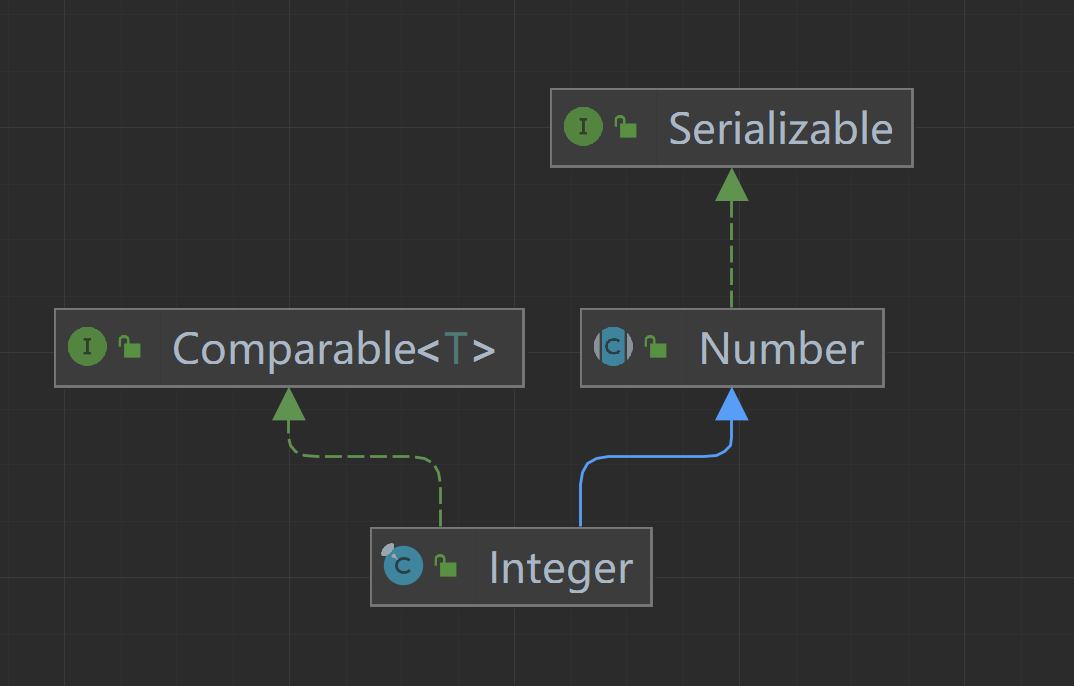
常量&变量
/*** A constant holding the minimum value an {@code int} can* have, -2<sup>31</sup>.*最小值0x80000000*/@Native public static final int MIN_VALUE = 0x80000000;/*** A constant holding the maximum value an {@code int} can* have, 2<sup>31</sup>-1.* 最大值0x7fffffff*/@Native public static final int MAX_VALUE = 0x7fffffff;/*** The {@code Class} instance representing the primitive type* {@code int}.** @since JDK1.1* int的原始类型*/@SuppressWarnings("unchecked")public static final Class<Integer> TYPE = (Class<Integer>) Class.getPrimitiveClass("int");/*** All possible chars for representing a number as a String* 数字表示为字符串的所有可能字符*/final static char[] digits = {'0' , '1' , '2' , '3' , '4' , '5' ,'6' , '7' , '8' , '9' , 'a' , 'b' ,'c' , 'd' , 'e' , 'f' , 'g' , 'h' ,'i' , 'j' , 'k' , 'l' , 'm' , 'n' ,'o' , 'p' , 'q' , 'r' , 's' , 't' ,'u' , 'v' , 'w' , 'x' , 'y' , 'z'};//使用DigitOnes和DigitTens来确定一个两位数int对应的char//十位数final static char [] DigitTens = {'0', '0', '0', '0', '0', '0', '0', '0', '0', '0','1', '1', '1', '1', '1', '1', '1', '1', '1', '1','2', '2', '2', '2', '2', '2', '2', '2', '2', '2','3', '3', '3', '3', '3', '3', '3', '3', '3', '3','4', '4', '4', '4', '4', '4', '4', '4', '4', '4','5', '5', '5', '5', '5', '5', '5', '5', '5', '5','6', '6', '6', '6', '6', '6', '6', '6', '6', '6','7', '7', '7', '7', '7', '7', '7', '7', '7', '7','8', '8', '8', '8', '8', '8', '8', '8', '8', '8','9', '9', '9', '9', '9', '9', '9', '9', '9', '9',} ;//个位数final static char [] DigitOnes = {'0', '1', '2', '3', '4', '5', '6', '7', '8', '9','0', '1', '2', '3', '4', '5', '6', '7', '8', '9','0', '1', '2', '3', '4', '5', '6', '7', '8', '9','0', '1', '2', '3', '4', '5', '6', '7', '8', '9','0', '1', '2', '3', '4', '5', '6', '7', '8', '9','0', '1', '2', '3', '4', '5', '6', '7', '8', '9','0', '1', '2', '3', '4', '5', '6', '7', '8', '9','0', '1', '2', '3', '4', '5', '6', '7', '8', '9','0', '1', '2', '3', '4', '5', '6', '7', '8', '9','0', '1', '2', '3', '4', '5', '6', '7', '8', '9',} ;//位数上限的数组final static int [] sizeTable = { 9, 99, 999, 9999, 99999, 999999, 9999999,99999999, 999999999, Integer.MAX_VALUE };/*** The value of the {@code Integer}.** @serial* 存储的int值*/private final int value;/*** The number of bits used to represent an {@code int} value in two's* complement binary form.** @since 1.5* 占用bit位*/@Native public static final int SIZE = 32;/*** The number of bytes used to represent a {@code int} value in two's* complement binary form.** @since 1.8* 占用字节数*/public static final int BYTES = SIZE / Byte.SIZE;/** use serialVersionUID from JDK 1.0.2 for interoperability *///序列化版本号@Native private static final long serialVersionUID = 1360826667806852920L;
-
value:表示Integer对应的int值。
-
MIN_VALUE:定义一个常量,表示int类型的最小值,-2^31,@Native 表示被注解的内容是原生,不影响java代码的本身逻辑。
-
MAX_VALUE:定义一个常量,表示int类型的最大值,2^31-1。
-
TYPE:表示这个包装类包装的是基本类型int。
-
Size:定义常量,用于以二进制补码形式表示int值的位数。
-
BYTES:定义常量,用于以二进制补码形式表示int值的字节数。
-
digits:表示所有可能用来表示数字的字符,因为int是支持2-36进制,所以需要36个字符在表示不同的数字。
-
DigitOnes和DigitTens:使用DigitOnes和DigitTens来确定一个两位数int对应的char。如65,DigitOnes[65]=5,DigitTens[65]=6。
-
sizeTable:主要用来计算一个int类型对应字符串的长度。如下的stringSize方法
构造方法
/*** Constructs a newly allocated {@code Integer} object that* represents the specified {@code int} value.** @param value the value to be represented by the* {@code Integer} object.*/public Integer(int value) {this.value = value;}/*** Constructs a newly allocated {@code Integer} object that* represents the {@code int} value indicated by the* {@code String} parameter. The string is converted to an* {@code int} value in exactly the manner used by the* {@code parseInt} method for radix 10.** @param s the {@code String} to be converted to an* {@code Integer}.* @exception NumberFormatException if the {@code String} does not* contain a parsable integer.* @see java.lang.Integer#parseInt(java.lang.String, int)*/public Integer(String s) throws NumberFormatException {this.value = parseInt(s, 10);}
常用方法
toString
将int转成字符串
/*** Returns a {@code String} object representing this* {@code Integer}'s value. The value is converted to signed* decimal representation and returned as a string, exactly as if* the integer value were given as an argument to the {@link* java.lang.Integer#toString(int)} method.** @return a string representation of the value of this object in* base 10.*/public String toString() {return toString(value);}
/*** Returns a {@code String} object representing the* specified integer. The argument is converted to signed decimal* representation and returned as a string, exactly as if the* argument and radix 10 were given as arguments to the {@link* #toString(int, int)} method.** @param i an integer to be converted.* @return a string representation of the argument in base 10.*/public static String toString(int i) {//int的最小值if (i == Integer.MIN_VALUE)return "-2147483648";//调用stringSize计算int值对应字符串的长度,负数有一个符号位所以要+1int size = (i < 0) ? stringSize(-i) + 1 : stringSize(i);//新建一个临时数组,用来存放int值每一位转成char后的值char[] buf = new char[size];//将int值每一位转成char放到buf中getChars(i, size, buf);return new String(buf, true);}
/*** Returns a string representation of the first argument in the* radix specified by the second argument.** <p>If the radix is smaller than {@code Character.MIN_RADIX}* or larger than {@code Character.MAX_RADIX}, then the radix* {@code 10} is used instead.** <p>If the first argument is negative, the first element of the* result is the ASCII minus character {@code '-'}* ({@code '\u005Cu002D'}). If the first argument is not* negative, no sign character appears in the result.** <p>The remaining characters of the result represent the magnitude* of the first argument. If the magnitude is zero, it is* represented by a single zero character {@code '0'}* ({@code '\u005Cu0030'}); otherwise, the first character of* the representation of the magnitude will not be the zero* character. The following ASCII characters are used as digits:** <blockquote>* {@code 0123456789abcdefghijklmnopqrstuvwxyz}* </blockquote>** These are {@code '\u005Cu0030'} through* {@code '\u005Cu0039'} and {@code '\u005Cu0061'} through* {@code '\u005Cu007A'}. If {@code radix} is* <var>N</var>, then the first <var>N</var> of these characters* are used as radix-<var>N</var> digits in the order shown. Thus,* the digits for hexadecimal (radix 16) are* {@code 0123456789abcdef}. If uppercase letters are* desired, the {@link java.lang.String#toUpperCase()} method may* be called on the result:** <blockquote>* {@code Integer.toString(n, 16).toUpperCase()}* </blockquote>** @param i an integer to be converted to a string.* @param radix the radix to use in the string representation.* @return a string representation of the argument in the specified radix.* @see java.lang.Character#MAX_RADIX* @see java.lang.Character#MIN_RADIX*/public static String toString(int i, int radix) {//当基数小于2或大于36,radix默认为10进制if (radix < Character.MIN_RADIX || radix > Character.MAX_RADIX)radix = 10;/* Use the faster version *///当基数为10时,直接调用toString方法后返回if (radix == 10) {return toString(i);}//因为int最大为32位(2进制占的位数),所以只需要33位就可以存储int+符号位char buf[] = new char[33];boolean negative = (i < 0);int charPos = 32;//将正数转换为负数if (!negative) {i = -i;}//循环 当负值i 依然小于 负值radixwhile (i <= -radix) {//buf[32] = digits[]buf[charPos--] = digits[-(i % radix)];i = i / radix;}buf[charPos] = digits[-i];//i小于0,符号标志位为'-'if (negative) {buf[--charPos] = '-';}return new String(buf, charPos, (33 - charPos));}
stringSize
获取一个int值对应字符串的长度
// Requires positive x//返回位数 利用sizeTable属性,可以高效的获取一个int值对应字符串你的长度,不用过多的除法或取模运算static int stringSize(int x) {for (int i=0; ; i++)if (x <= sizeTable[i])return i+1;}
getChars
在toString方法中调用,主要作用是,将int值的每一位转成char后放到buf中。
/*** Places characters representing the integer i into the* character array buf. The characters are placed into* the buffer backwards starting with the least significant* digit at the specified index (exclusive), and working* backwards from there.** Will fail if i == Integer.MIN_VALUE*/static void getChars(int i, int index, char[] buf) {int q, r;//buf数组的长度int charPos = index;//符号标志位char sign = 0;//当i小于0时,if (i < 0) {//定义符号位‘-’sign = '-';//将负值i取反i = -i;}// Generate two digits per iteration//①如果i大于65536(两个字节的长度)那么就去除i的后两位while (i >= 65536) {//去除i的后两位赋值给q 比如i为65536,那么q为655q = i / 100;// really: r = i - (q * 100);//②计算后两位的值,如果i为65537,那么r为37,公式 r = 65537 - (655 * 100)r = i - ((q << 6) + (q << 5) + (q << 2));//去除后两位重新赋值ii = q;//通过DigitOnes和DigitTens获取r的个位和十位对应的char。buf [--charPos] = DigitOnes[r];buf [--charPos] = DigitTens[r];}// Fall thru to fast mode for smaller numbers// assert(i <= 65536, i);//经过上面循环,i小于等于65536for (;;) {//③就是q = i/10,如果i=655,那么q=65q = (i * 52429) >>> (16+3);//取i的最后一位 r= 655 - (65 * 10) = 5r = i - ((q << 3) + (q << 1)); // r = i-(q*10) ...//通过digits数组获取对应的charbuf [--charPos] = digits [r];// q=65,并赋值给i,进入下一个循环i = q;if (i == 0) break;}//符号标志为不为0 即为‘-’if (sign != 0) {//数组下标为0的char为‘-’buf [--charPos] = sign;}}
parseInt
/*** Parses the string argument as a signed integer in the radix* specified by the second argument. The characters in the string* must all be digits of the specified radix (as determined by* whether {@link java.lang.Character#digit(char, int)} returns a* nonnegative value), except that the first character may be an* ASCII minus sign {@code '-'} ({@code '\u005Cu002D'}) to* indicate a negative value or an ASCII plus sign {@code '+'}* ({@code '\u005Cu002B'}) to indicate a positive value. The* resulting integer value is returned.** <p>An exception of type {@code NumberFormatException} is* thrown if any of the following situations occurs:* <ul>* <li>The first argument is {@code null} or is a string of* length zero.** <li>The radix is either smaller than* {@link java.lang.Character#MIN_RADIX} or* larger than {@link java.lang.Character#MAX_RADIX}.** <li>Any character of the string is not a digit of the specified* radix, except that the first character may be a minus sign* {@code '-'} ({@code '\u005Cu002D'}) or plus sign* {@code '+'} ({@code '\u005Cu002B'}) provided that the* string is longer than length 1.** <li>The value represented by the string is not a value of type* {@code int}.* </ul>** <p>Examples:* <blockquote><pre>* parseInt("0", 10) returns 0* parseInt("473", 10) returns 473* parseInt("+42", 10) returns 42* parseInt("-0", 10) returns 0* parseInt("-FF", 16) returns -255* parseInt("1100110", 2) returns 102* parseInt("2147483647", 10) returns 2147483647* parseInt("-2147483648", 10) returns -2147483648* parseInt("2147483648", 10) throws a NumberFormatException* parseInt("99", 8) throws a NumberFormatException* parseInt("Kona", 10) throws a NumberFormatException* parseInt("Kona", 27) returns 411787* </pre></blockquote>** @param s the {@code String} containing the integer* representation to be parsed* @param radix the radix to be used while parsing {@code s}.* @return the integer represented by the string argument in the* specified radix.* @exception NumberFormatException if the {@code String}* does not contain a parsable {@code int}.* 将radix进制的String类型整数转换为int类型。*/public static int parseInt(String s, int radix)throws NumberFormatException{/** WARNING: This method may be invoked early during VM initialization* before IntegerCache is initialized. Care must be taken to not use* the valueOf method.*/if (s == null) {throw new NumberFormatException("null");}if (radix < Character.MIN_RADIX) {throw new NumberFormatException("radix " + radix +" less than Character.MIN_RADIX");}if (radix > Character.MAX_RADIX) {throw new NumberFormatException("radix " + radix +" greater than Character.MAX_RADIX");}int result = 0;boolean negative = false;int i = 0, len = s.length();int limit = -Integer.MAX_VALUE;int multmin;int digit;if (len > 0) {char firstChar = s.charAt(0);// 若firstChar < '0' 说明第一个字符是+或—。if (firstChar < '0') { // Possible leading "+" or "-"if (firstChar == '-') {negative = true;limit = Integer.MIN_VALUE;} else if (firstChar != '+')throw NumberFormatException.forInputString(s);if (len == 1) // Cannot have lone "+" or "-"throw NumberFormatException.forInputString(s);i++;}// 这个变量是为了防止超过最大整数multmin = limit / radix;while (i < len) {// Accumulating negatively avoids surprises near MAX_VALUE// 获取进制为radix的字符i的整数int类型digit = Character.digit(s.charAt(i++),radix);if (digit < 0) {throw NumberFormatException.forInputString(s);}// 乘以radix之前先判断是否越界if (result < multmin) {throw NumberFormatException.forInputString(s);}result *= radix;if (result < limit + digit) {throw NumberFormatException.forInputString(s);}// 这里使用负数进行计算,因为最小负数比最大正数多一个,不然可能出现溢出result -= digit;}} else {throw NumberFormatException.forInputString(s);}return negative ? result : -result;}/*** Parses the string argument as a signed decimal integer. The* characters in the string must all be decimal digits, except* that the first character may be an ASCII minus sign {@code '-'}* ({@code '\u005Cu002D'}) to indicate a negative value or an* ASCII plus sign {@code '+'} ({@code '\u005Cu002B'}) to* indicate a positive value. The resulting integer value is* returned, exactly as if the argument and the radix 10 were* given as arguments to the {@link #parseInt(java.lang.String,* int)} method.** @param s a {@code String} containing the {@code int}* representation to be parsed* @return the integer value represented by the argument in decimal.* @exception NumberFormatException if the string does not contain a* parsable integer.* 默认十进制*/public static int parseInt(String s) throws NumberFormatException {return parseInt(s,10);}
parseUnsignedInt
/*** Parses the string argument as an unsigned integer in the radix* specified by the second argument. An unsigned integer maps the* values usually associated with negative numbers to positive* numbers larger than {@code MAX_VALUE}.** The characters in the string must all be digits of the* specified radix (as determined by whether {@link* java.lang.Character#digit(char, int)} returns a nonnegative* value), except that the first character may be an ASCII plus* sign {@code '+'} ({@code '\u005Cu002B'}). The resulting* integer value is returned.** <p>An exception of type {@code NumberFormatException} is* thrown if any of the following situations occurs:* <ul>* <li>The first argument is {@code null} or is a string of* length zero.** <li>The radix is either smaller than* {@link java.lang.Character#MIN_RADIX} or* larger than {@link java.lang.Character#MAX_RADIX}.** <li>Any character of the string is not a digit of the specified* radix, except that the first character may be a plus sign* {@code '+'} ({@code '\u005Cu002B'}) provided that the* string is longer than length 1.** <li>The value represented by the string is larger than the* largest unsigned {@code int}, 2<sup>32</sup>-1.** </ul>*** @param s the {@code String} containing the unsigned integer* representation to be parsed* @param radix the radix to be used while parsing {@code s}.* @return the integer represented by the string argument in the* specified radix.* @throws NumberFormatException if the {@code String}* does not contain a parsable {@code int}.* @since 1.8* 将String类型的无符号数转换为int类型。*/public static int parseUnsignedInt(String s, int radix)throws NumberFormatException {if (s == null) {throw new NumberFormatException("null");}int len = s.length();if (len > 0) {char firstChar = s.charAt(0);if (firstChar == '-') {throw newNumberFormatException(String.format("Illegal leading minus sign " +"on unsigned string %s.", s));} else {// 这里先判断String长度是否小于等于5,这是因为最大整数用36进制表示为6位,越界了if (len <= 5 || // Integer.MAX_VALUE in Character.MAX_RADIX is 6 digits// 因为10进制比较常用,所以这里它专门判断是不是10进制(radix == 10 && len <= 9) ) { // Integer.MAX_VALUE in base 10 is 10 digitsreturn parseInt(s, radix);} else {// 如果无法用parseInt来转换就需要使用长整型longlong ell = Long.parseLong(s, radix);// 若转换后的long高32位有数字说明越界了if ((ell & 0xffff_ffff_0000_0000L) == 0) {return (int) ell;} else {throw newNumberFormatException(String.format("String value %s exceeds " +"range of unsigned int.", s));}}}} else {throw NumberFormatException.forInputString(s);}}/*** Parses the string argument as an unsigned decimal integer. The* characters in the string must all be decimal digits, except* that the first character may be an an ASCII plus sign {@code* '+'} ({@code '\u005Cu002B'}). The resulting integer value* is returned, exactly as if the argument and the radix 10 were* given as arguments to the {@link* #parseUnsignedInt(java.lang.String, int)} method.** @param s a {@code String} containing the unsigned {@code int}* representation to be parsed* @return the unsigned integer value represented by the argument in decimal.* @throws NumberFormatException if the string does not contain a* parsable unsigned integer.* @since 1.8*/public static int parseUnsignedInt(String s) throws NumberFormatException {return parseUnsignedInt(s, 10);}
valueOf
/*** Returns an {@code Integer} object holding the value* extracted from the specified {@code String} when parsed* with the radix given by the second argument. The first argument* is interpreted as representing a signed integer in the radix* specified by the second argument, exactly as if the arguments* were given to the {@link #parseInt(java.lang.String, int)}* method. The result is an {@code Integer} object that* represents the integer value specified by the string.** <p>In other words, this method returns an {@code Integer}* object equal to the value of:** <blockquote>* {@code new Integer(Integer.parseInt(s, radix))}* </blockquote>** @param s the string to be parsed.* @param radix the radix to be used in interpreting {@code s}* @return an {@code Integer} object holding the value* represented by the string argument in the specified* radix.* @exception NumberFormatException if the {@code String}* does not contain a parsable {@code int}.* 调用ParseInt方法将String转换为Integer。*/public static Integer valueOf(String s, int radix) throws NumberFormatException {return Integer.valueOf(parseInt(s,radix));}/*** Returns an {@code Integer} object holding the* value of the specified {@code String}. The argument is* interpreted as representing a signed decimal integer, exactly* as if the argument were given to the {@link* #parseInt(java.lang.String)} method. The result is an* {@code Integer} object that represents the integer value* specified by the string.** <p>In other words, this method returns an {@code Integer}* object equal to the value of:** <blockquote>* {@code new Integer(Integer.parseInt(s))}* </blockquote>** @param s the string to be parsed.* @return an {@code Integer} object holding the value* represented by the string argument.* @exception NumberFormatException if the string cannot be parsed* as an integer.*/public static Integer valueOf(String s) throws NumberFormatException {return Integer.valueOf(parseInt(s, 10));}/*** Returns an {@code Integer} instance representing the specified* {@code int} value. If a new {@code Integer} instance is not* required, this method should generally be used in preference to* the constructor {@link #Integer(int)}, as this method is likely* to yield significantly better space and time performance by* caching frequently requested values.** This method will always cache values in the range -128 to 127,* inclusive, and may cache other values outside of this range.** @param i an {@code int} value.* @return an {@code Integer} instance representing {@code i}.* @since 1.5* 首先判断缓存里有没有,如果有就从缓存里面拿,没有就创建一个。*/public static Integer valueOf(int i) {if (i >= IntegerCache.low && i <= IntegerCache.high)return IntegerCache.cache[i + (-IntegerCache.low)];return new Integer(i);}IntegerCache
/*** Cache to support the object identity semantics of autoboxing for values between* -128 and 127 (inclusive) as required by JLS.** The cache is initialized on first usage. The size of the cache* may be controlled by the {@code -XX:AutoBoxCacheMax=<size>} option.* During VM initialization, java.lang.Integer.IntegerCache.high property* may be set and saved in the private system properties in the* sun.misc.VM class.* 缓存静态内部类 -128 ,127*/private static class IntegerCache {static final int low = -128;static final int high;static final Integer cache[];static {// high value may be configured by propertyint h = 127;// 这个是启动虚拟机的时候带的参数,可以自行设置表示缓存的最大整数String integerCacheHighPropValue =sun.misc.VM.getSavedProperty("java.lang.Integer.IntegerCache.high");if (integerCacheHighPropValue != null) {try {int i = parseInt(integerCacheHighPropValue);i = Math.max(i, 127);// Maximum array size is Integer.MAX_VALUE// 缓存的最大整数h = Math.min(i, Integer.MAX_VALUE - (-low) -1);} catch( NumberFormatException nfe) {// If the property cannot be parsed into an int, ignore it.}}high = h;cache = new Integer[(high - low) + 1];int j = low;for(int k = 0; k < cache.length; k++)cache[k] = new Integer(j++);// range [-128, 127] must be interned (JLS7 5.1.7)assert IntegerCache.high >= 127;}private IntegerCache() {}}
decode
/*** Decodes a {@code String} into an {@code Integer}.* Accepts decimal, hexadecimal, and octal numbers given* by the following grammar:** <blockquote>* <dl>* <dt><i>DecodableString:</i>* <dd><i>Sign<sub>opt</sub> DecimalNumeral</i>* <dd><i>Sign<sub>opt</sub></i> {@code 0x} <i>HexDigits</i>* <dd><i>Sign<sub>opt</sub></i> {@code 0X} <i>HexDigits</i>* <dd><i>Sign<sub>opt</sub></i> {@code #} <i>HexDigits</i>* <dd><i>Sign<sub>opt</sub></i> {@code 0} <i>OctalDigits</i>** <dt><i>Sign:</i>* <dd>{@code -}* <dd>{@code +}* </dl>* </blockquote>** <i>DecimalNumeral</i>, <i>HexDigits</i>, and <i>OctalDigits</i>* are as defined in section 3.10.1 of* <cite>The Java™ Language Specification</cite>,* except that underscores are not accepted between digits.** <p>The sequence of characters following an optional* sign and/or radix specifier ("{@code 0x}", "{@code 0X}",* "{@code #}", or leading zero) is parsed as by the {@code* Integer.parseInt} method with the indicated radix (10, 16, or* 8). This sequence of characters must represent a positive* value or a {@link NumberFormatException} will be thrown. The* result is negated if first character of the specified {@code* String} is the minus sign. No whitespace characters are* permitted in the {@code String}.** @param nm the {@code String} to decode.* @return an {@code Integer} object holding the {@code int}* value represented by {@code nm}* @exception NumberFormatException if the {@code String} does not* contain a parsable integer.* @see java.lang.Integer#parseInt(java.lang.String, int)* 将String类型的nm解码为Integer类型*/public static Integer decode(String nm) throws NumberFormatException {int radix = 10;int index = 0;boolean negative = false;Integer result;if (nm.isEmpty())throw new NumberFormatException("Zero length string");char firstChar = nm.charAt(0);// Handle sign, if present// 首先判断是否有符号if (firstChar == '-') {negative = true;index++;} else if (firstChar == '+')index++;// Handle radix specifier, if present// 查看字符串表示的整数的进制// 是否是16进制if (nm.startsWith("0x", index) || nm.startsWith("0X", index)) {index += 2;radix = 16;}// 是否是16进制else if (nm.startsWith("#", index)) {index ++;radix = 16;}// 是否是8进制else if (nm.startsWith("0", index) && nm.length() > 1 + index) {index ++;radix = 8;}// 判断符号是否写错地方了if (nm.startsWith("-", index) || nm.startsWith("+", index))throw new NumberFormatException("Sign character in wrong position");try {// 将相应进制的字符串转换为对应的Integer类型// 这里如果是最小负数会出错进入到下面的catch语句中处理// 这里有点操作麻烦了,如果是我就会在这里将nm的符号一起传入result = Integer.valueOf(nm.substring(index), radix);// 将符号赋值给resultresult = negative ? Integer.valueOf(-result.intValue()) : result;} catch (NumberFormatException e) {// If number is Integer.MIN_VALUE, we'll end up here. The next line// handles this case, and causes any genuine format error to be// rethrown.String constant = negative ? ("-" + nm.substring(index)): nm.substring(index);result = Integer.valueOf(constant, radix);}return result;}
github:Integer源码
如文章有问题请留言,谢谢~
相关文章:

Integer源码
介绍 Integer是int类型的包装类,继承自Number抽象类,实现了Comparable接口。提供了一些处理int类型的方法,比如int到String类型的转换方法或String类型到int类型的转换方法,当然也包含与其他类型之间的转换方法。 Comparable提供…...
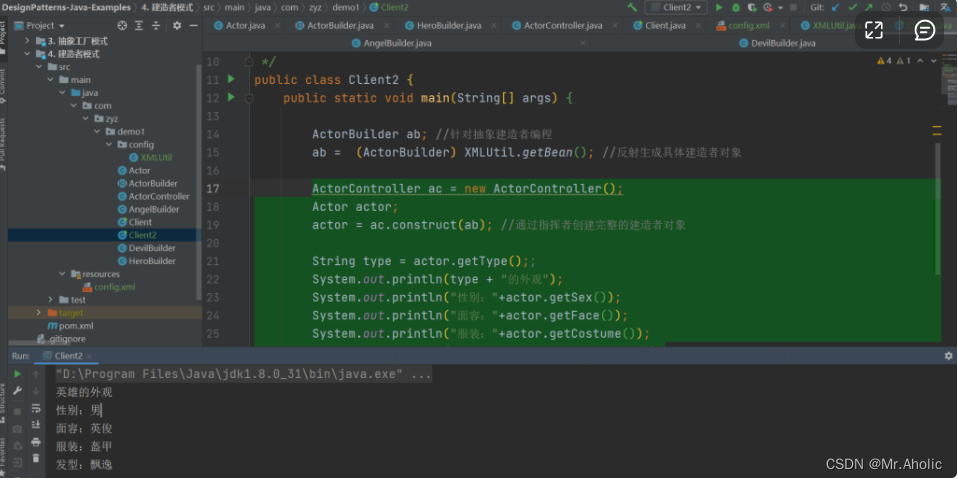
【四】设计模式~~~创建型模式~~~建造者模式(Java)
【学习难度:★★★★☆,使用频率:★★☆☆☆】 4.1. 模式动机 无论是在现实世界中还是在软件系统中,都存在一些复杂的对象,它们拥有多个组成部分,如汽车,它包括车轮、方向盘、发送机等各种部件…...

MarkDown的基本使用方法
为了给官方的文档知识总结:Markdown 基本语法 | Markdown 官方教程 #空格内容:‘#’表示标题的等级,越少表示标题级别越高(字越大) 在一行的末尾加两个或多个空格再回车,就是我们普通的文本回车。【还有一…...

IDEA 安装配置步骤详解
引言 IntelliJ IDEA 是一款功能强大的集成开发环境,它具有许多优势,适用于各种开发过程。本文将介绍 IDEA 的主要优势,并提供详细的安装配置步骤。 介绍 IntelliJ IDEA(以下简称 IDEA)之所以被广泛使用,…...
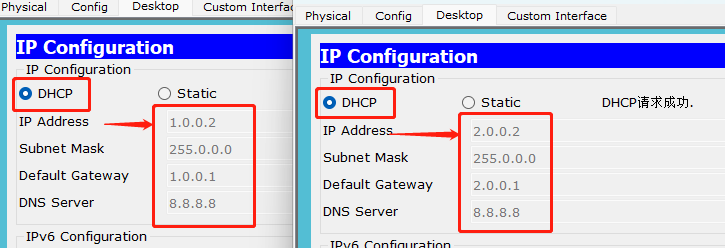
【网络】· 路由器中配置单臂路由和DHCP,VTP原理
目录 🍉单臂路由的工作原理 🥝交换机配置 🥝路由器配置 🍉路由器配置DHCP 🥝配置实例 🥝路由器配置 🥝验证 🍉VTP工作原理 🥝VTP模式 🥝VTP通告 🥝…...

Python 子域名扫描工具:使用多线程优化
部分数据来源:ChatGPT 本文仅用于信息安全的学习,请遵守相关法律法规,严禁用于非法途径。若观众因此作出任何危害网络安全的行为,后果自负,与本人无关。 摘要:子域名扫描是一个重要的安全工作,它可以发现目标网站的更多威胁和漏洞。本文介绍了如何使用 Python 来编写一…...

宝塔面板一键部署Z-Blog博客 - 内网穿透实现公网访问
文章目录 1.前言2.网站搭建2.1. 网页下载和安装2.2.网页测试2.3.cpolar的安装和注册 3.本地网页发布3.1.Cpolar临时数据隧道3.2.Cpolar稳定隧道(云端设置)3.3.Cpolar稳定隧道(本地设置) 4.公网访问测试5.结语 转发自cpolar极点云的…...

深入理解设计原则之单一职责原则(SRP)
系列文章目录 C高性能优化编程系列 深入理解设计原则系列 深入理解设计模式系列 高级C并发线程编程 SRP:单一职责原则 系列文章目录1、单一职责原则的定义和解读2、单一职责原则案例解读2.1、违背单一职责原则反面案例2.2、违背单一职责原则反面案例 - 解决方案 3…...

钉钉群通过短信转发器接收手机短信消息
1.短信转发器官网下载 下载地址 首发地址:https://github.com/pppscn/SmsForwarder/releases国内镜像:https://gitee.com/pp/SmsForwarder/releases网盘下载:https://wws.lanzoui.com/b025yl86h 访问密码:pppscn 使用文档 首发…...
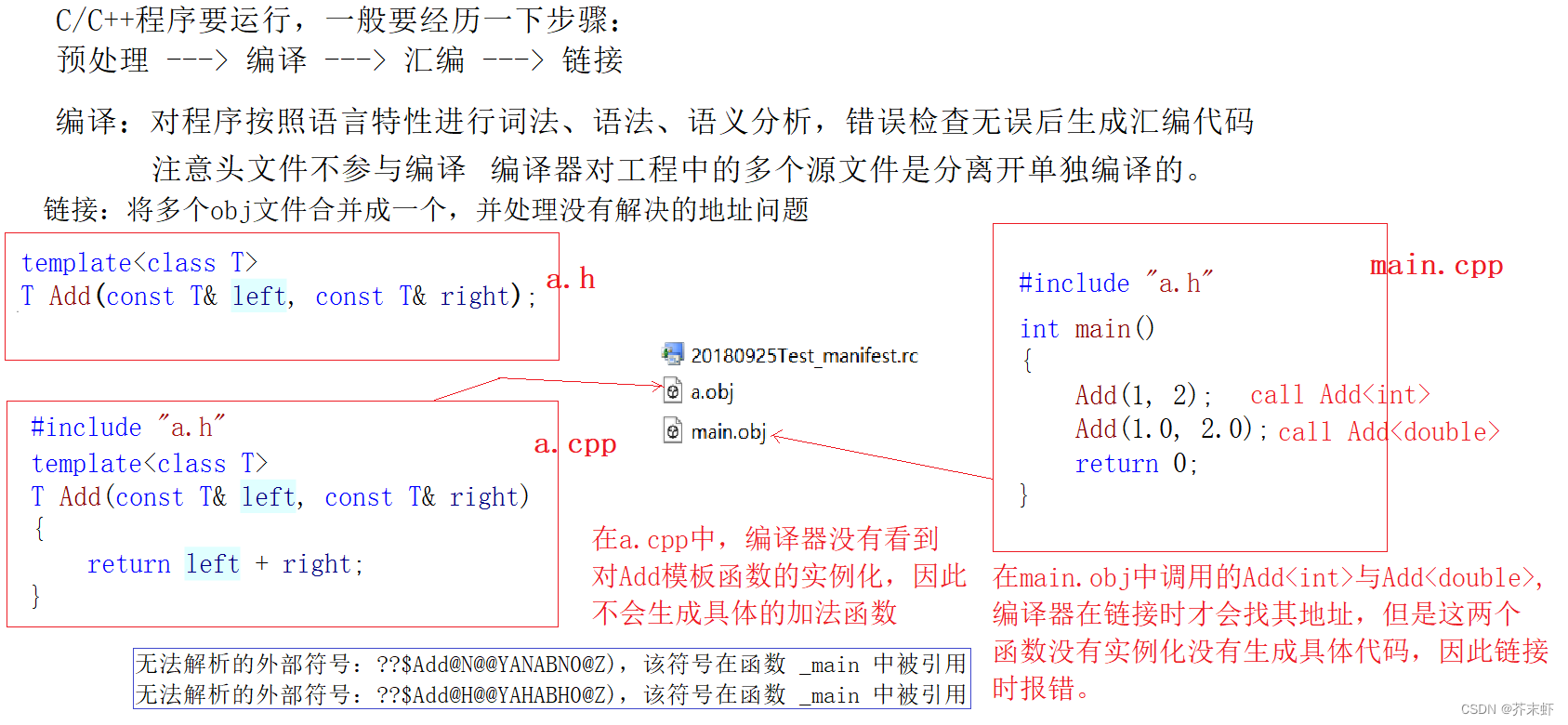
【C++模版】模版进阶 {非类型模版参数; 模版的特化; 模版的分离编译; 模版总结}
一、非类型模版参数 模板参数分类型形参与非类型形参。 类型形参:出现在模板参数列表中,跟在class或者typename之后的参数类型名称。非类型形参:就是用一个常量作为类(函数)模板的一个参数,在类(函数)模板中可将该参数当成常量来…...
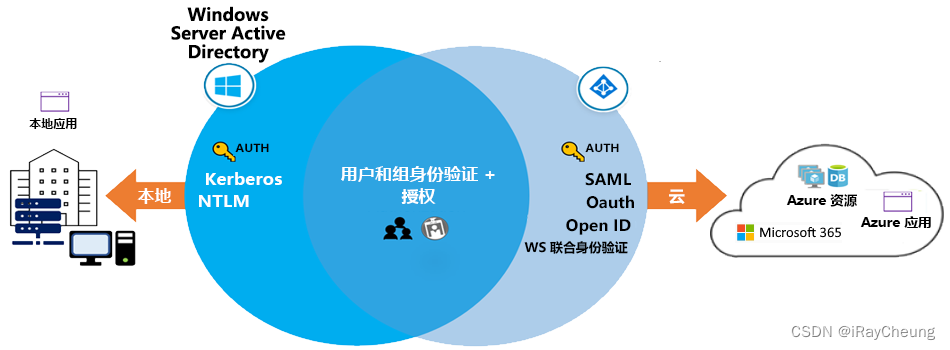
Azure Active Directory 的功能和优势
Azure Active Directory (Azure AD) 是 Microsoft 基于云的多租户目录和标识管理服务。 Azure AD 有助于支持用户访问资源和应用程序,例如: 位于企业网络上的内部资源和应用。 Microsoft 365、Azure 门户和 SaaS 应用程序等外部资源。 为组织开发的云应…...

mysql查询语句执行过程及运行原理命令
Mysql查询语句执行原理 数据库查询语句如何执行? DML语句首先进行语法分析,对使用sql表示的查询进行语法分析,生成查询语法分析树。语义检查:检查sql中所涉及的对象以及是否在数据库中存在,用户是否具有操作权限等视…...

可视化探索开源项目的 contributor 关系
引语:作为国内外最大的代码托管平台,根据最新的 GitHub 数据,它拥有超 372,000,000 个仓库,其中有 28,000,000 是公开仓。分布式图数据库 NebulaGraph 便是其中之一,同其他开源项目一样,NebulaGrpah 也有自…...

SpringBoot 实现启动项目后立即执行方法的几种方式
在项目开发中某些场景必须要用到启动项目后立即执行方式的功能,如我们需要去初始化数据到redis缓存,或者启动后读取相应的字典配置等,这篇文章主要聊聊实现立即执行的几种方法。 一、CommandLineRunner和ApplicationRunner 这两者的实现方法…...

2021第十二届蓝桥杯Python组国赛【真题+解析+代码】
🎁2021第十二届蓝桥杯python组国赛真题 🚀 真题练习,冲刺国赛 🚀 2021第十二届蓝桥杯python组国赛真题解析代码 博观而约取,厚积而薄发 🏆国赛真题目录 文章目录 🎁2021第十二届蓝桥杯python组国…...

3D引擎渲染管理系统概览
3D引擎渲染管理系统, 目前由: RendererScene, RendererSubScene, RendererSceneGraph, RenderProcess, RenderingCacheProcess/FBOProcess, (Material)PassGraph, (Material)PassNode, Material(Shader)Pipeline, RenderingFlowContainer, RenderableEnti…...
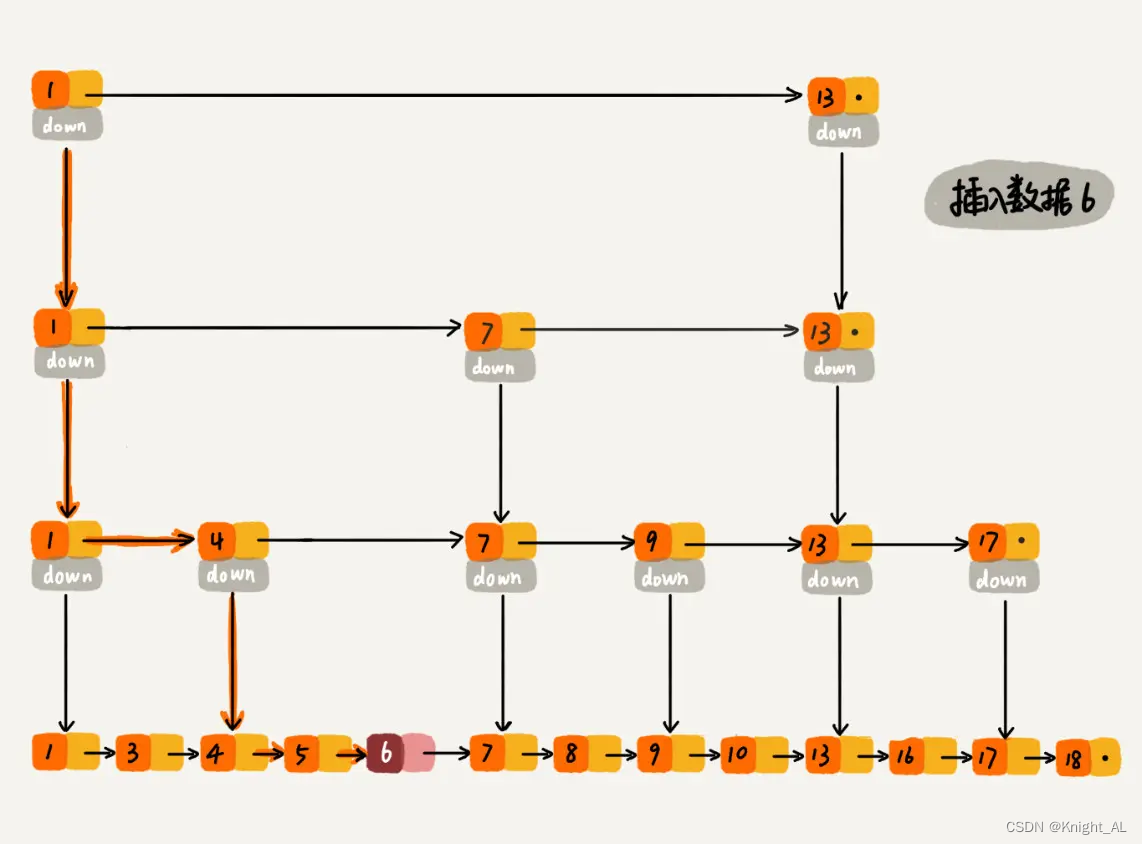
蔚来Java实习面经
目录 1.解释一下MySQL中脏读、不可重复读、幻读2.索引失效的场景有哪些?3.Explain执行计划用过吗4.Type字段有哪一些5.binlog和redolog的区别6.Redis基本数据类型7.有序集合的底层数据结构使用的是?8.跳表插入数据的过程能描述一下吗9.线程池,…...
流媒体的一次尝试)
nginx 搭建http-flv(rtmp)流媒体的一次尝试
nginx 搭建http-flv(rtmp)流媒体的一次尝试 项目需要通过调用海康摄像头实现远程监控,但是由于网络限制,只能通过代理来调用,因此只能放弃海康官网提供的视频插件,经过一番搜索,决定采用此种方式:nginx 搭…...

Unity 工具 之 Azure 微软语音合成普通方式和流式获取音频数据的简单整理
Unity 工具 之 Azure 微软语音合成普通方式和流式获取音频数据的简单整理 目录 Unity 工具 之 Azure 微软语音合成普通方式和流式获取音频数据的简单整理 一、简单介绍 二、实现原理 三、注意实现 四、实现步骤 六、关键脚本 附加: 声音设置相关 一、简单介绍…...

【A卡,Windows】stable diffusion webui下载安装避坑指南
观前提醒 本文内容都是本人亲身经历的,一个一个安装下载测试所感,当然如果你更想用傻瓜式集成包的,那还是跳过这篇文章吧。 当然我不推荐这篇文章的操作,因为我用了差不多1h才有一副图,有N卡,就用N卡&…...

中南大学无人机智能体的全面评估!BEDI:用于评估无人机上具身智能体的综合性基准测试
作者:Mingning Guo, Mengwei Wu, Jiarun He, Shaoxian Li, Haifeng Li, Chao Tao单位:中南大学地球科学与信息物理学院论文标题:BEDI: A Comprehensive Benchmark for Evaluating Embodied Agents on UAVs论文链接:https://arxiv.…...

力扣-35.搜索插入位置
题目描述 给定一个排序数组和一个目标值,在数组中找到目标值,并返回其索引。如果目标值不存在于数组中,返回它将会被按顺序插入的位置。 请必须使用时间复杂度为 O(log n) 的算法。 class Solution {public int searchInsert(int[] nums, …...
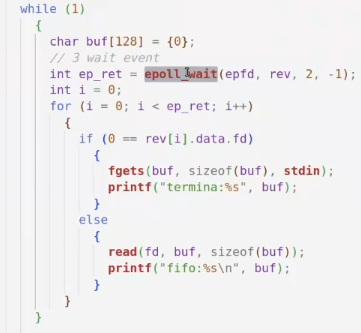
day36-多路IO复用
一、基本概念 (服务器多客户端模型) 定义:单线程或单进程同时监测若干个文件描述符是否可以执行IO操作的能力 作用:应用程序通常需要处理来自多条事件流中的事件,比如我现在用的电脑,需要同时处理键盘鼠标…...

【学习笔记】erase 删除顺序迭代器后迭代器失效的解决方案
目录 使用 erase 返回值继续迭代使用索引进行遍历 我们知道类似 vector 的顺序迭代器被删除后,迭代器会失效,因为顺序迭代器在内存中是连续存储的,元素删除后,后续元素会前移。 但一些场景中,我们又需要在执行删除操作…...

HubSpot推出与ChatGPT的深度集成引发兴奋与担忧
上周三,HubSpot宣布已构建与ChatGPT的深度集成,这一消息在HubSpot用户和营销技术观察者中引发了极大的兴奋,但同时也存在一些关于数据安全的担忧。 许多网络声音声称,这对SaaS应用程序和人工智能而言是一场范式转变。 但向任何技…...

区块链技术概述
区块链技术是一种去中心化、分布式账本技术,通过密码学、共识机制和智能合约等核心组件,实现数据不可篡改、透明可追溯的系统。 一、核心技术 1. 去中心化 特点:数据存储在网络中的多个节点(计算机),而非…...

智能职业发展系统:AI驱动的职业规划平台技术解析
智能职业发展系统:AI驱动的职业规划平台技术解析 引言:数字时代的职业革命 在当今瞬息万变的就业市场中,传统的职业规划方法已无法满足个人和企业的需求。据统计,全球每年有超过2亿人面临职业转型困境,而企业也因此遭…...

多元隐函数 偏导公式
我们来推导隐函数 z z ( x , y ) z z(x, y) zz(x,y) 的偏导公式,给定一个隐函数关系: F ( x , y , z ( x , y ) ) 0 F(x, y, z(x, y)) 0 F(x,y,z(x,y))0 🧠 目标: 求 ∂ z ∂ x \frac{\partial z}{\partial x} ∂x∂z、 …...

2025-05-08-deepseek本地化部署
title: 2025-05-08-deepseek 本地化部署 tags: 深度学习 程序开发 2025-05-08-deepseek 本地化部署 参考博客 本地部署 DeepSeek:小白也能轻松搞定! 如何给本地部署的 DeepSeek 投喂数据,让他更懂你 [实验目的]:理解系统架构与原…...

在Spring Boot中集成RabbitMQ的完整指南
前言 在现代微服务架构中,消息队列(Message Queue)是实现异步通信、解耦系统组件的重要工具。RabbitMQ 是一个流行的消息中间件,支持多种消息协议,具有高可靠性和可扩展性。 本博客将详细介绍如何在 Spring Boot 项目…...
